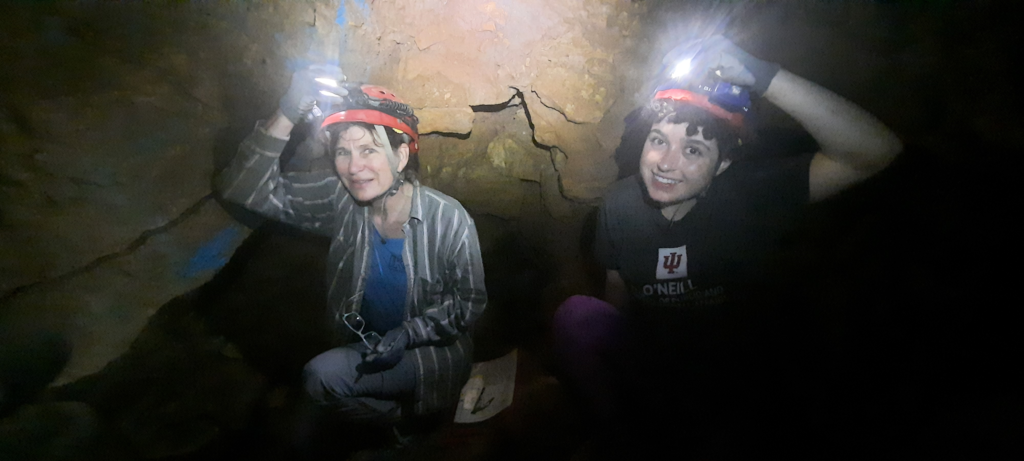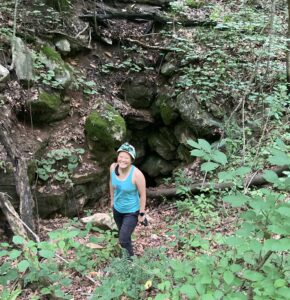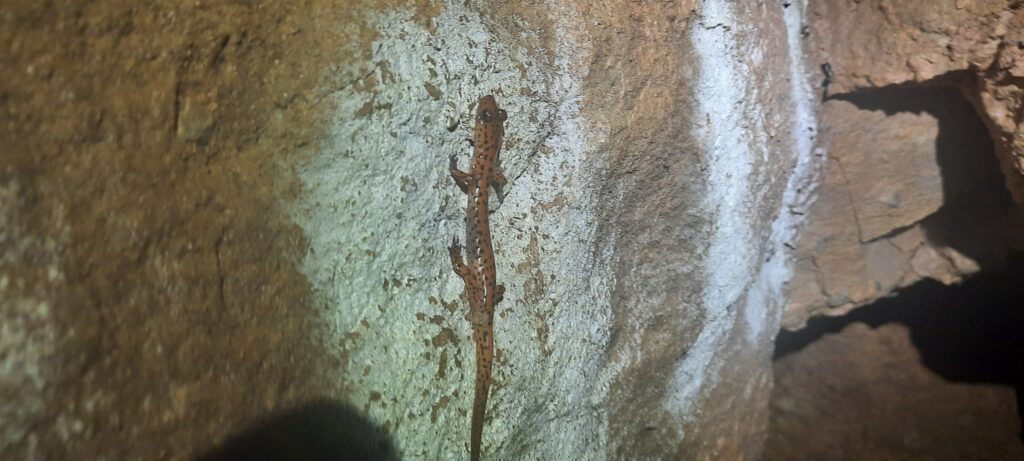

Exploring Wayne Cave Preserve
Preserving Habitat Above and Below
Solution caves are huge plumbing systems. Rainwater contains small amounts of nitric and carbonic acids. As these dilute acids seep through the cracks and bedding planes in the vadose zone of the bedrock, they slowly dissolve some of the limestone. Over time, the vertical crevices enlarge and literally funnel rainwater into the drainage system below, creating sinkholes.

Discovering a New World in the Cave

Indiana’s caves (but not all caves) were formed by water flowing through the joints and bedding planes of Mississippian and Devonian (and Silurian and Ordovician rocks, for that matter) period limestones.(IKC Facebook post January 14, 2022).
Protecting Resources, Even Those Hidden Underground
I learned so much from our friends at IKC during our visit. Descending into the cave was an important reminder that the way we protect, care for, and manage our land above ground directly impacts our land, water and wildlife below. We are all connected.
Indiana Karst Conservancy, similar to their land trust peers throughout the state, is a lean but powerful non-profit organization. The work they do has a profound impact on the communities they serve and this unique resource, and their work is accomplished entirely by volunteers!
Since going underground, I’ve shared a few photos with friends and family. Many had the reaction, “I could never do that.” In reality, I don’t think anyone really knows unless they try — but only while outfitted with the proper equipment and an expert guide (of course).


